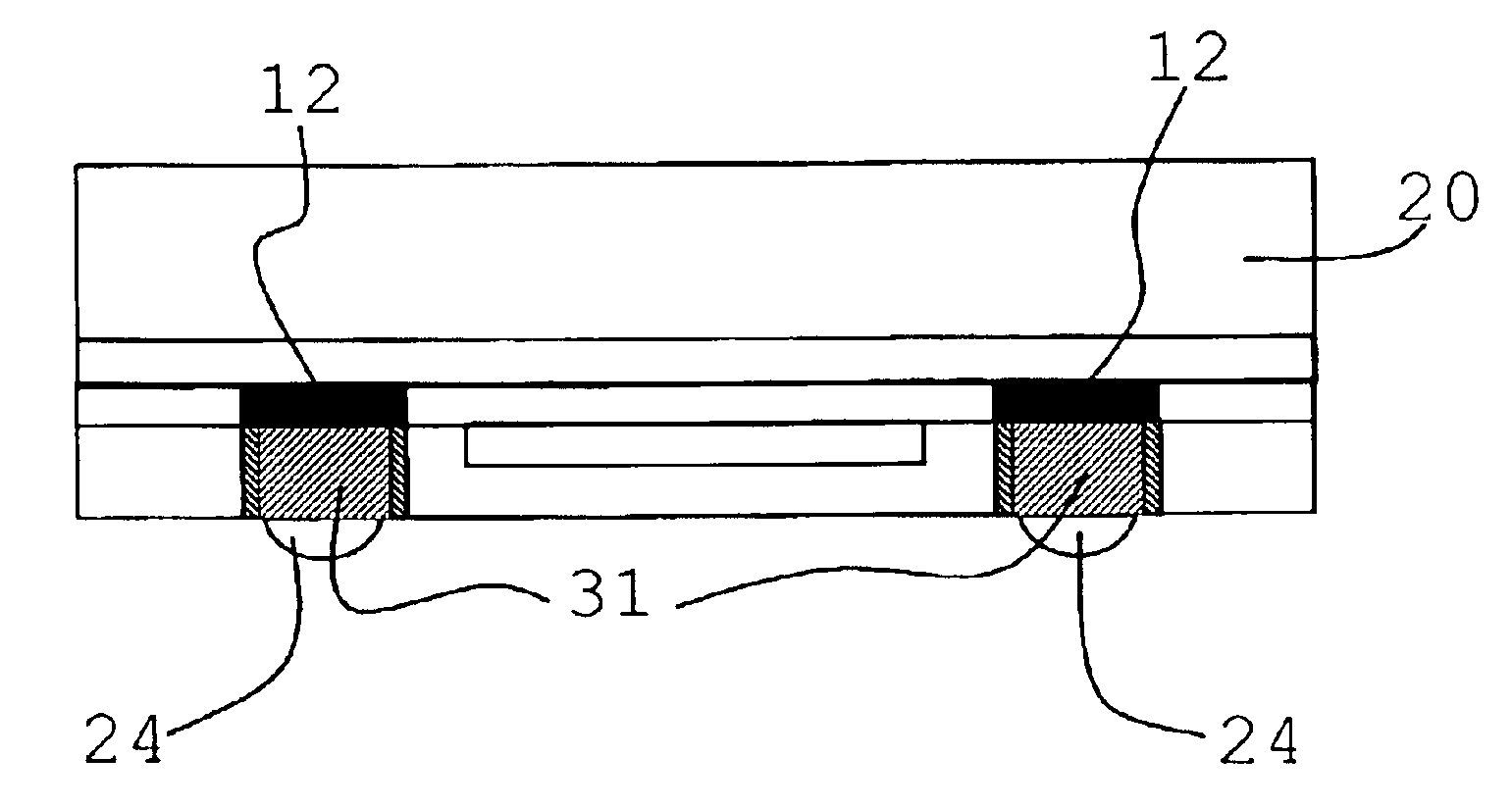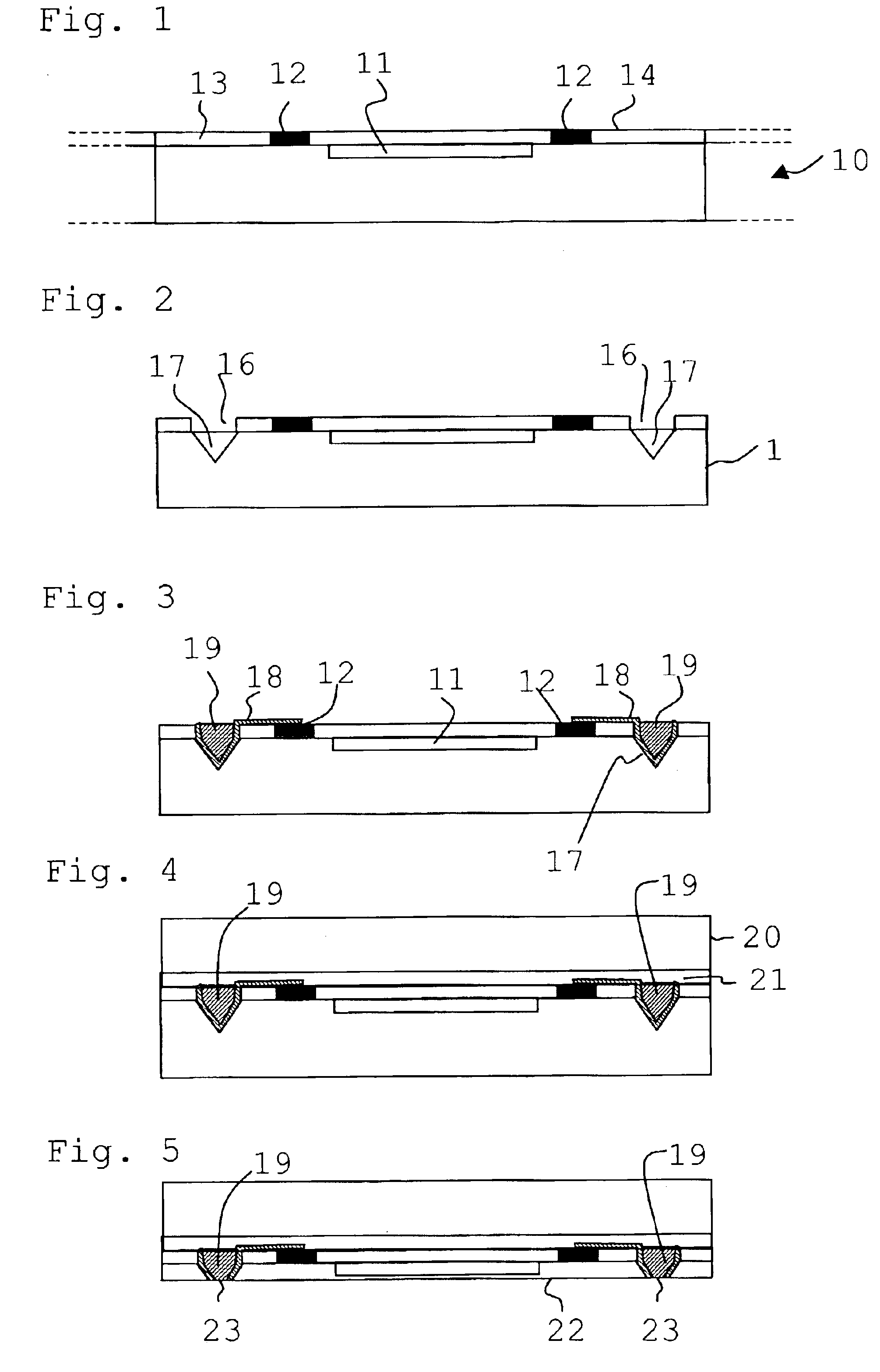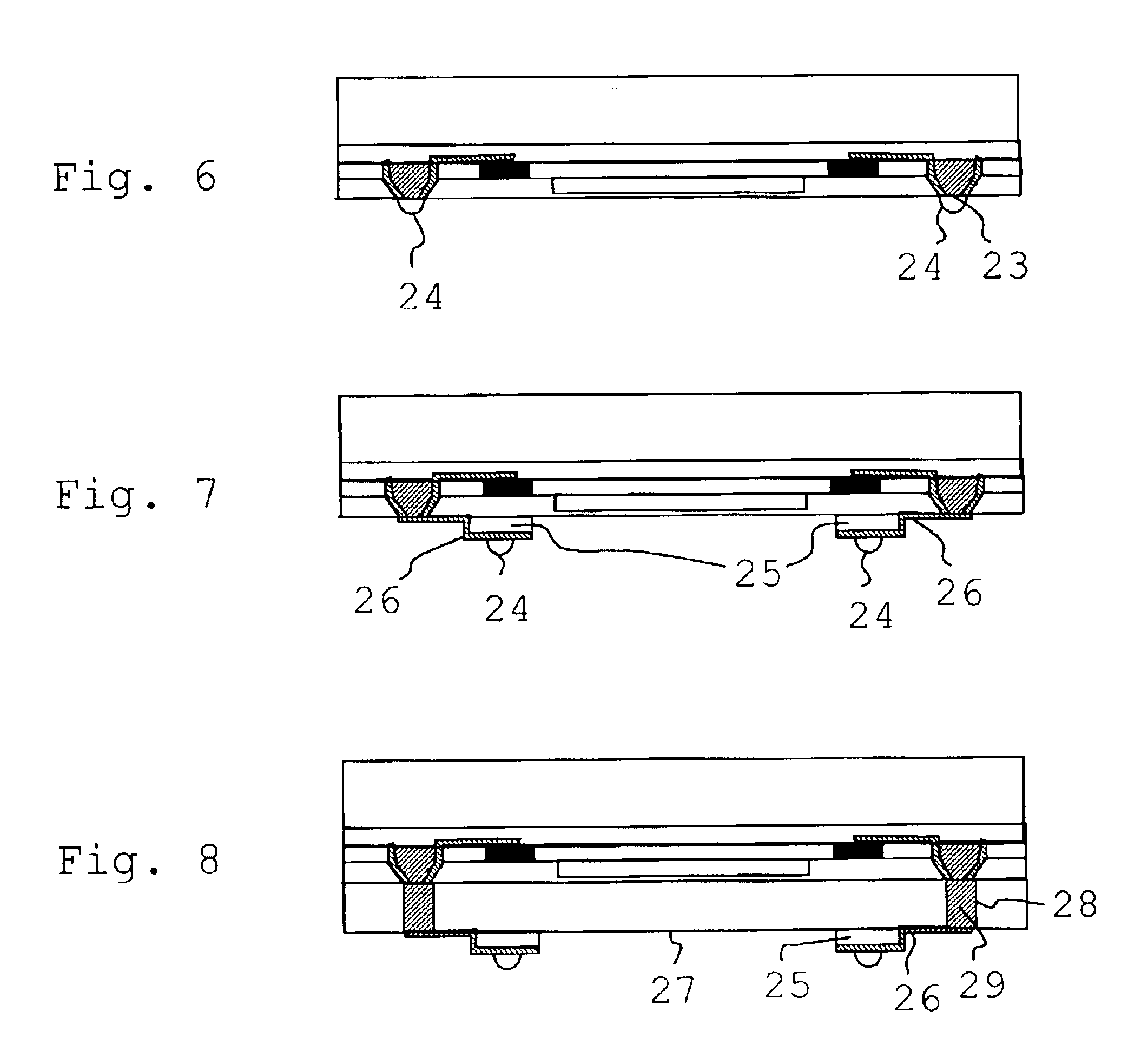Process for making contact with and housing integrated circuits
a technology for integrated circuits and housings, which is applied in the direction of basic electric elements, solid-state devices, radio-controlled devices, etc., can solve the problems of disproportionately high chips produced using the claimed process, inability to take into account, and the relative size of chips or integrated circuits, etc., to achieve less expensive and simpler process
- Summary
- Abstract
- Description
- Claims
- Application Information
AI Technical Summary
Benefits of technology
Problems solved by technology
Method used
Image
Examples
Embodiment Construction
[0082]In connection with the following detailed description of preferred embodiments, reference is made first of all to an exemplary embodiment which is illustrated in FIGS. 1 to 5. FIGS. 1 to 5 show the process steps of a first variant of the process according to the invention for producing electrical contact connections on the basis of various crosssectional views of a semiconductor wafer 10 or semiconductor chip 10. In this case, the latter is supposed preferably to be a sensor chip, and in this instance, by way of example, an optical or pressure-sensitive or moisture-sensitive chip, etc., in which it is particularly important that the active sensor side can or should be uncovered after contact has been made or after securing or contact connection of the chip on, for example, a board or to other equipment or devices. The process steps illustrated in FIGS. 1 to 5 use cross-sectional views also to show process steps which are suitable for preparing a chip for joining to form a thre...
PUM
 Login to View More
Login to View More Abstract
Description
Claims
Application Information
 Login to View More
Login to View More - R&D
- Intellectual Property
- Life Sciences
- Materials
- Tech Scout
- Unparalleled Data Quality
- Higher Quality Content
- 60% Fewer Hallucinations
Browse by: Latest US Patents, China's latest patents, Technical Efficacy Thesaurus, Application Domain, Technology Topic, Popular Technical Reports.
© 2025 PatSnap. All rights reserved.Legal|Privacy policy|Modern Slavery Act Transparency Statement|Sitemap|About US| Contact US: help@patsnap.com



